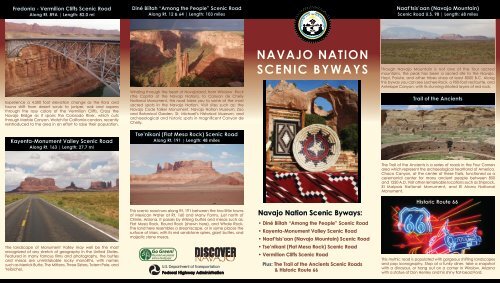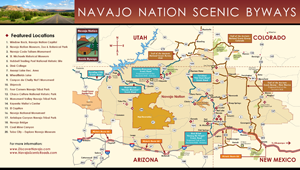
The crimson canvas of the American Southwest unfurls dramatically across the vast expanse of the Navajo Nation, a sovereign territory larger than several U.S. states combined. To drive through its scenic byways is not merely to traverse a landscape, but to journey into the heart of a living culture, an ancient history, and a geological masterpiece. This is a pilgrimage of the senses, a profound encounter with the enduring spirit of the Diné people and the breathtaking grandeur of their ancestral lands.
The roads themselves are arteries threading through eons of geological time. Asphalt ribbons snake between towering sandstone monuments, their surfaces carved by wind and water into impossible shapes. Mesas rise like petrified giants, their flat tops casting long, dancing shadows across the desert floor. Buttes, isolated and defiant, stand as sentinels guarding secrets whispered by the ages. The palette of the land is a study in vibrant earth tones: fiery reds, deep ochres, sun-baked oranges, and the occasional flash of verdant scrub that clings stubbornly to life. With the shifting light of dawn and dusk, these colors ignite, transforming the panorama into a living, breathing work of art.
One of the most iconic stretches is the Navajo Nation Scenic Byway, which loosely encompasses segments of US-160 and US-163. Heading north from Kayenta, Arizona, toward Monument Valley, the landscape gradually transforms into the instantly recognizable vista of towering rock formations that have graced countless films and photographs. These are not merely rocks; they are Tsé Biiʼ Ndzisgaii, "Valley of the Rocks" in Navajo, and each formation carries a name and a story in Diné oral tradition. The Mittens, Merrick Butte, and Totem Pole are just a few of the silent sentinels that punctuate the horizon, evoking a sense of timelessness and immense scale. While Monument Valley Navajo Tribal Park requires a separate entrance fee and often a guided tour for deeper exploration, the views from the byway itself are nothing short of spectacular, offering a profound introduction to the Navajo homeland.
Further east, the byways lead to other marvels. US-191, tracing a path through the heart of the Nation, guides travelers toward Canyon de Chelly National Monument near Chinle. This site, co-managed by the National Park Service and the Navajo Nation, is unique in its continuous human habitation for over 5,000 years. From the rim drives, visitors gaze down into a labyrinthine network of sheer red cliffs, where ancient Ancestral Puebloan cliff dwellings cling precariously to ledges, testaments to ingenious survival. Spider Rock, a towering sandstone spire, rises dramatically from the canyon floor, a sacred place in Navajo mythology. To descend into the canyon, one must be accompanied by an authorized Navajo guide, a vital practice that respects tribal customs and ensures the preservation of this sacred land. "The canyon is not just a place to visit," a local guide might explain, "it is our home, our history, and our future."
Venturing north and east, US-64 offers a different, equally compelling vista: Shiprock Peak (Tsé Bitʼaʼí). This magnificent volcanic neck, rising over 1,500 feet above the desert floor, is a sacred mountain for the Diné people, meaning "rock with wings" or "winged rock." Its distinctive, jagged profile dominates the horizon for miles around, a powerful symbol of the Navajo Nation’s spiritual connection to the land. From the byway, its majesty is undeniable, an immovable anchor in a constantly shifting world.
The drive through Navajo Nation is profoundly cultural. Roadside stands offer authentic Navajo jewelry – intricate silverwork inlaid with turquoise, coral, and other precious stones – and hand-woven rugs, masterpieces of fiber art that can take months or even years to complete, each pattern telling a story passed down through generations. These are not mere souvenirs; they are tangible expressions of Diné artistry and resilience. Trading posts, some established over a century ago, continue to serve as community hubs, offering a glimpse into the ongoing rhythm of daily life.

The history etched into this land runs deep, often marked by hardship and incredible endurance. The "Long Walk" of 1864, a forced removal of the Navajo people from their ancestral lands by the U.S. government, remains a poignant memory. Yet, from this crucible of suffering, the Diné emerged with an even stronger resolve and a profound connection to their heritage. This resilience is epitomized by the Navajo Code Talkers of World War II, a group of approximately 400-500 Marines who used their complex, unwritten language to create an unbreakable code that proved instrumental in Allied victories in the Pacific. Their contribution was so vital that Major Howard Connor, a signal officer, famously stated, "Were it not for the Navajos, the Marines would never have taken Iwo Jima." Driving through these lands, one feels the weight of this history, a testament to the enduring strength of a people who have survived and thrived against immense odds.
Navajo philosophy, particularly the concept of Hózhó, or "walking in beauty," permeates the experience. It speaks to a holistic worldview that emphasizes harmony, balance, and interconnectedness with the natural world and all living things. The vast, open spaces and the raw beauty of the landscape invite introspection, fostering a sense of peace and a deeper appreciation for the simple elegance of existence. The silence, broken only by the whisper of the wind or the distant call of a bird, can be profoundly therapeutic.
For those planning this journey, preparation and respect are paramount. The Navajo Nation is a sovereign entity with its own laws and customs. Visitors are guests and are expected to behave accordingly. Many areas, particularly sacred sites or sensitive ecological zones, require permits or a Navajo guide. Trespassing on private or tribal land is strictly prohibited. Infrastructure can be sparse in some areas, so it’s wise to keep gas tanks full, carry ample water, and be prepared for varying weather conditions. The climate can swing dramatically from scorching desert heat to freezing winter temperatures, often within the same day.
Driving through Navajo Nation’s scenic byways is more than a road trip; it’s an educational and spiritual odyssey. It’s an opportunity to witness the grandeur of the American West through the eyes of its original inhabitants, to feel the pulse of an ancient culture, and to be humbled by the raw, untamed beauty of the land. It challenges perceptions, inspires awe, and leaves an indelible mark on the soul. It is an invitation to slow down, to listen to the land, and to truly "walk in beauty" along paths shaped by millennia of wind, water, and the enduring spirit of the Diné.



